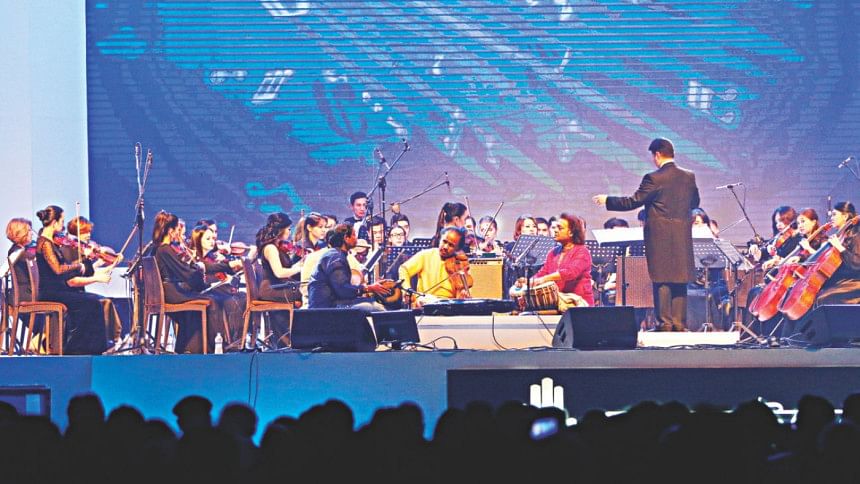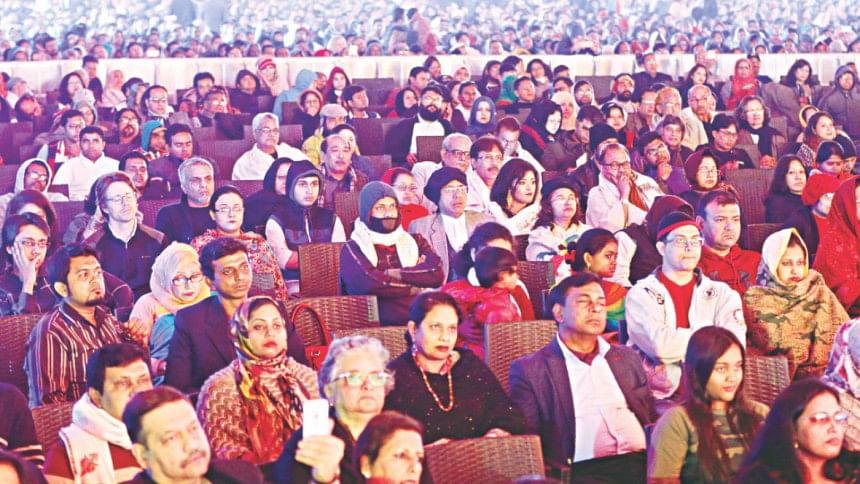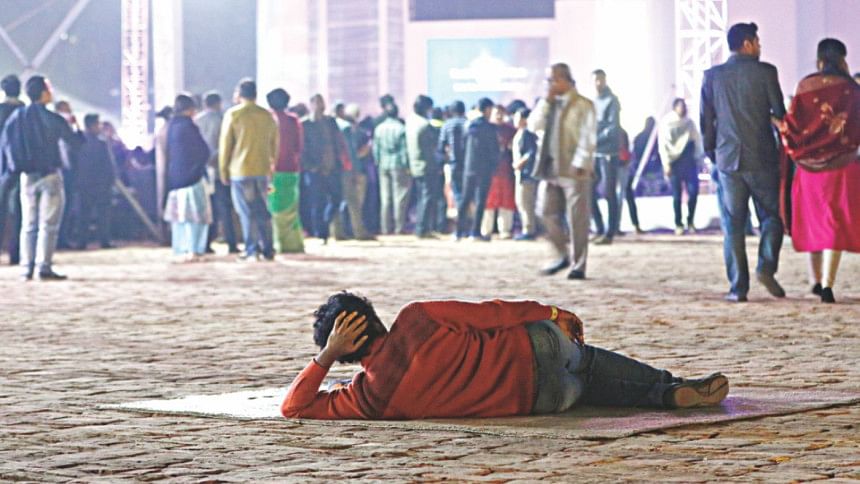Why this year's BCMF was more significant than you realise

The Bengal Classical Music Festival just completed is sixth edition on the dawn of December 31, and as has been the case in the last five years, brought pretty much every cultured mind in the capital (and some from beyond) to one place for five nights of bliss. But it's safe to say this year's festival will be remembered for a few more reasons than the past ones. Here are the biggest of them:
A New Home
After the festival's cancellation was announced in October due to the Army Stadium -- the venue of the festival since its birth -- not being allotted to Bengal Foundation this year, it sent shockwaves in the country's cultural arena. After a month's lull the Abahani ground was secured as a venue, but apprehensions were aplenty: is it big enough? Will it have enough bathrooms? Can a traffic catastrophe in the dense residential area be averted? Will the nearby houses and hospitals be safe from loud sounds throughout the night? The answer to all of them: A resounding yes. In fact, many attendees said they prefer this venue over the Army Stadium, and with Abahani Club's interest (as voiced by Amina Ahmed, mother of the club's vice chairman Kazi Nabil Ahmed in her speech on the closing day) it looks very likely that those audience members might get their wish.

A Blessing in Disguise
Turns out, having to relocate to a new venue was, rather counter-intuitively, good for the festival. Event managers Blues Communications had to build almost every structure up from the ground, as they had pretty much a blank slate of land, but it allowed them to design everything according to plan. According to Bengal Foundation chair Abul Khair, the Abahani field has 100,000 square feet more usable space than the Army Stadium, and it showed in the arrangement. The food stalls and food court, the pavilions of Bengal Foundation's sister organisations were designed and placed well, and the main seating area was also expanded from previous years. The 50+ public restrooms, built only for the festival, were also more spacious and conveniently-accessible, as efficient were the entry gates. The overall atmosphere was more relaxed, especially on the more crowded last two days. The idea of having ample floor mats for audience members to arrange their own picnic-like gatherings and chairs that could be moved and placed in circles gave it the look and feel of major international music festivals.
Ever-Expanding Boundaries
The festival had drawn in audiences in tens of thousands since its first edition, but Bengal Foundation has never been complacent about it; every year there is something new at the festival to look forward to, whether it's a legendary artiste, new instruments or new musical styles (like combinations and forms of instrumental and vocal jugalbandi). This year, the organisers decided to go further -- by bringing in a full Philharmonic Orchestra to give attendees a taste of Western Classical Music in blend with Indian classical. The 58-member Astana Symphony Philharmonic Orchestra no less than opened the festival, and played in conjunction with virtuoso violinist Dr. L Subramaniam creating a gorgeous soundscape of harmony. While there were other new elements to the festival including the Mohan Veena, the cello playing Indian classical music and a dance company, the symphonic orchestra proved that Bengal Foundation is far from out of new ideas.

A Testament of Strength
The Bengal Classical Music Festival had gone on without facing any major hurdles in its first five years; this year an obstacle so big arose that it had to be initially scrapped. The organisers usually work for seven-eight months to put the festival in place. This year, they had just over a month (with the venue confirmed on November 14), within which they had to re-plan it, relocate it to a new venue, set that venue up, get dates from all the artistes at the busiest time of year for classical musicians, arrange for all their flights, accommodations, get all the security and government permissions and a thousand other things that go behind organising a festival of its magnitude. When it was cancelled, Bengal Foundation said they had to do so because they do not want to curtail the festival in its size and scope, and after given the permissions and support from the government they showed that they have the dedication, professionalism and resources to give the audience an unforgettable festival no matter how high the odds are stacked against them. It will give Bengal Foundation, and the music-loving audience of the country, great confidence to overcome those odds, and to take this festival to even greater heights in coming years.

 For all latest news, follow The Daily Star's Google News channel.
For all latest news, follow The Daily Star's Google News channel. 



Comments